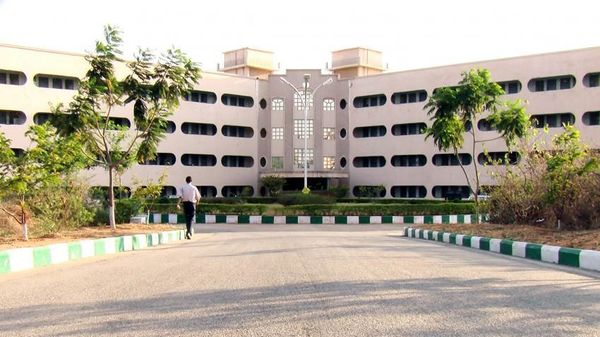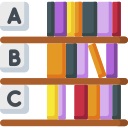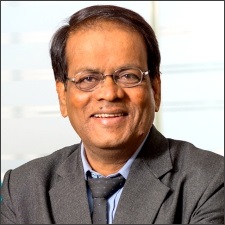
IIIT Hyderabad International Institute of Information Technology
The International Institute of Information Technology, Hyderabad (IIITH or IIIT Hyderabad) is a university focused on information technology, and their applications in other fields such as computer science, electronics and communications, and other domains. It is an autonomous university, established in 1998 as the Not-for-Profit Public Private Partnership (N-PPP) model, the state government supplies grants for land and buildings and it is the first IIIT in India below this model. The institute is in Gachibowli, Hyderabad, about 20 km from the old city and the central railway station. Over the years, the institute has developed research programs in various fields, with an emphasis on technology and applied research.
IIITH provides the undergraduates, post graduates and Ph.D programs. The undergraduates programs are:
• B. Tech in Computer Science and Engineering (CSE)
• B. Tech in Electronics and Communication Engineering (ECE)
The Post Graduates programs in different specialization are:
• M.Tech Computer Science Engineering (CSE)
• M.Tech Computer Science & Information Security (CSIS)
• M.Tech Computer Aided Structural Engineering (CASE)
• M.Tech Bioinformatics
• MS Computer Science Engineering (CSE)
• MS Computational Natural Sciences (CNS)
• MS Electronics and Communication Engineering (ECE)
• MS Computational Linguistics (CL)
• MS Civil Engineering (CE)
• MS Bioinformatics
• MS IT in Building Science
• M.Phil Computational Linguistics (CL)
The institute offers Ph.D programs in many specializations:
• Ph.D Computer Science Engineering (CSE)
• Ph.D Computational Natural Sciences (CNS)
• Ph.D Electronics and Communication Engineering (ECE)
• Ph.D Computational Linguistics (CL)
• Ph.D Civil Engineering (CE)
• Ph.D Bioinformatics
• Ph.D IT in Power Systems
• Ph.D Spatial Informatics
• Ph.D Cognitive Science
• Ph.D Exact Humanities
The area of the Institute campus is 66 acres (about 267,000 square meters). The four buildings have corporate schools and research centers. Additionally, the academic building houses the Lecture Halls, Tutorial Rooms, Computer Lab and Electronics Lab and offices of the administration and faculty. The buildings are named after mountain ranges, Nilgiri, Vindhya and Himalayas.
Courses
Highlights
• The Indian languages machine translation system developed by an IIITH led consortium was launched by Dr APJ Abdul Kalam, at the international conference WWW 2011, in March 2011.
• The institute offers various programs at Undergraduate, Post graduate and Doctorate Level.
• Programs are offered in different streams and specialization.
• Modern techniques are blended with old and gold methods of teaching.
• One of the leading member institute of IIIT.
Facilities

Ransomware by ./M789

Cafeteria

Hostel

Sports Complex

Gym

Wi-Fi Campus

Convenience Store

Labs
Contact
International Institute of Information Technology Gachibowli, Hyderabad 500032 Telangana, INDIA
ugadmissions@iiit.ac.in
-
PGDM-Post Graduate Diploma in Management
Total Fee: INR 745000
-
B.Com Bachelor of Commerce
Total Fee: INR 240000
-
PGDM-Post Graduate Diploma in Management
Total Fee: INR 745000
-
B.Com Bachelor of Commerce
Total Fee: INR 240000
-
PGDM-Post Graduate Diploma in Management
Total Fee: INR 745000
-
B.Com Bachelor of Commerce
Total Fee: INR 240000
-
PGDM-Post Graduate Diploma in Management
Total Fee: INR 745000
-
B.Com Bachelor of Commerce
Total Fee: INR 240000
Highlights
- International Institute of Business Studies (IIBS) is an AICTE Approved college which is recognized by Ministry of HRD, Government of Indias
- IIBS rated India’s No.1 emerging B-School in placement by Samaja Parivarthana
- Faculty of IIBS consists of experienced corporate faculty with 65% Ph.D. holders
- Ranked 2nd among 'Top 10 Southern B Schools' by Silicon India, 2017
- Ranked 3rd in Placement among the Best B-School in India 2017 by Silicon India
Modern Facilities
- Smart Classroom: IIBS provides fully equipped classroom with air-conditioned, projectors, remote controlled LCD and high speed connected computers and cordless microphones
- Library: It is fully equipped by highly information recourses like latest periodicals, reference texts, management text books, national and international journals and DVDs and well organized
- Digital Library: Students of IIBS can be access the digital library through any computers by using their ID and password
- Auditorium: IIBS auditorium is fully furnished and laced with all modern devices to more impactful view
- Hostel: IIBS provides hostel accommodation for boys and girls with mesh facility
Conducting IIMs have been changed the pattern of the CAT exams several times over the years. It is extremely beneficial for the aspirants to know the CAT paper pattern as it helps in preparation and the aspirants can prepare according to the pattern and weightage of the topics.
Overview of the Exam Pattern of CAT 2020
| Mode of the Exam | Online Only |
|---|---|
| Total number of Questions | 100 |
| Total Marks | 300 |
| Duration of the Examination | 3 hours (180 minutes) |
| Sectional Division of the Paper | 3 sections |
| Types of the Questions | Both MCQs and Non MCQs |
| Marking Scheme |
For Correct Answers → +3 marks For Incorrect Answers → -1 mark For Unattempted Questions → No marks |
| Name of the Sections |
1. Verbal Ability & Reading Comprehension 2. Logical Reasoning & Data Interpretation 3. Quantitative Aptitude |
This Exam is conducted once in a year usually in the month of November on online mode and it is expected that this year this exam will held in the last week of November. The question paper contains 100 questions to be solved in 3 hours. 3 marks are assigned for correct answer and 1 mark is deducted for wrong answer in CAT Exam. English is the only medium of answering the questions. Each question consists of four choices from which only one is correct, candidates have to select the right answer from the given options.
CAT question paper consists of three sections divided as
- 1. Verbal and Reading Comprehension (VARC)
- 2. Data Interpretation & Logical Reasoning (DI & LR)
- 3. Quantitative Ability (QA)
Overview of the Exam Pattern of CAT 2020
| Section’s Name | Number of Questions | Duration (in mins) |
|---|---|---|
| Verbal and Reading Comprehension (VARC) | 34 | 60 |
| Data Interpretation & Logical Reasoning (DI & LR) |
VA → 10 Questions RC → 24 Questions |
60 |
| Quantitative Ability (QA) |
DI → 16 Questions LR → 16 Questions |
60 |
| Total | 100 | 180 minutes (3hours) |
Verbal Ability and Reading Comprehension Section
This section is a combination of two sub-sections namely Verbal Ability (VA) and Reading Comprehension (RC). The main focus of this section is on the English language skills of the candidates and how they understand and elucidate the paragraphs and Passages. This section consists of 34 questions, 10 questions of Verbal Ability and 24 questions of Reading Comprehension. Verbal ability sub-section consists of questions related to Para-jumbles, Summary based questions, Sentence Correction and Completion. The other sub-section, Reading Comprehension is based on the questions related to Vocabulary, title etc.
Logical Reasoning & Data Interpretation Section
This section is also divided into two sub-sections, one is Logical Reasoning (LR) and other is Data Interpretation (DI). A total of 32 questions are asked in this section, 16 questions from both the sub-section. LR section contains solvable questions generally from the topics like inequalities, symbol operations, direction sense test etc. On the other hand DI section is a little difficult and time-consuming section as it consists of several confusing data case lets questions. This section contains tricky question and a little mistake in understanding the case lets can lead the candidates to attempt all the questions from a particular set incorrectly.
Quantitative Aptitude Section
This section is a standalone section which comprises only numerical questions from different topics of Math. A total of 34 questions are asked in this section. This section contains questions based on Basic Arithmetic, Number System, Geometry, Algebra, Modern Math etc. The questions in this section ranges from easy to moderately high and can be answered easily with proper practice of the syllabus of Quantitative Aptitude.

|
Prof. Prabhakar H
B.Sc., PG in HRD, PG in Training & Development |

|
Prof. Prabhakar H
B.Sc., PG in HRD, PG in Training & Development |

|
Prof. Prabhakar H
B.Sc., PG in HRD, PG in Training & Development |

|
Prof. Prabhakar H
B.Sc., PG in HRD, PG in Training & Development |

|
Prof. Prabhakar H
B.Sc., PG in HRD, PG in Training & Development |

|
Prof. Prabhakar H
B.Sc., PG in HRD, PG in Training & Development |
Facilities













CAT 2020 will be conducted in the following cities:
| Port Blair | Kurnool | Nellore | Tirupati |
| Vijaywada | Visakhapatnam | Chittoor | Itanagar |
| Dibrugarh | Guwahati | Silchara | Aurangabad |
| Gaya | Muzaffarpur | Patna | Chandigarh |
| lorem | lorem | lorem | lorem |
Contact Us
#75, Muthugadahalli, Bangalore North Jala Hobli, near International Airport airport(New Airport), Bangalore ( Karnataka)
admission@iibsonline.com









